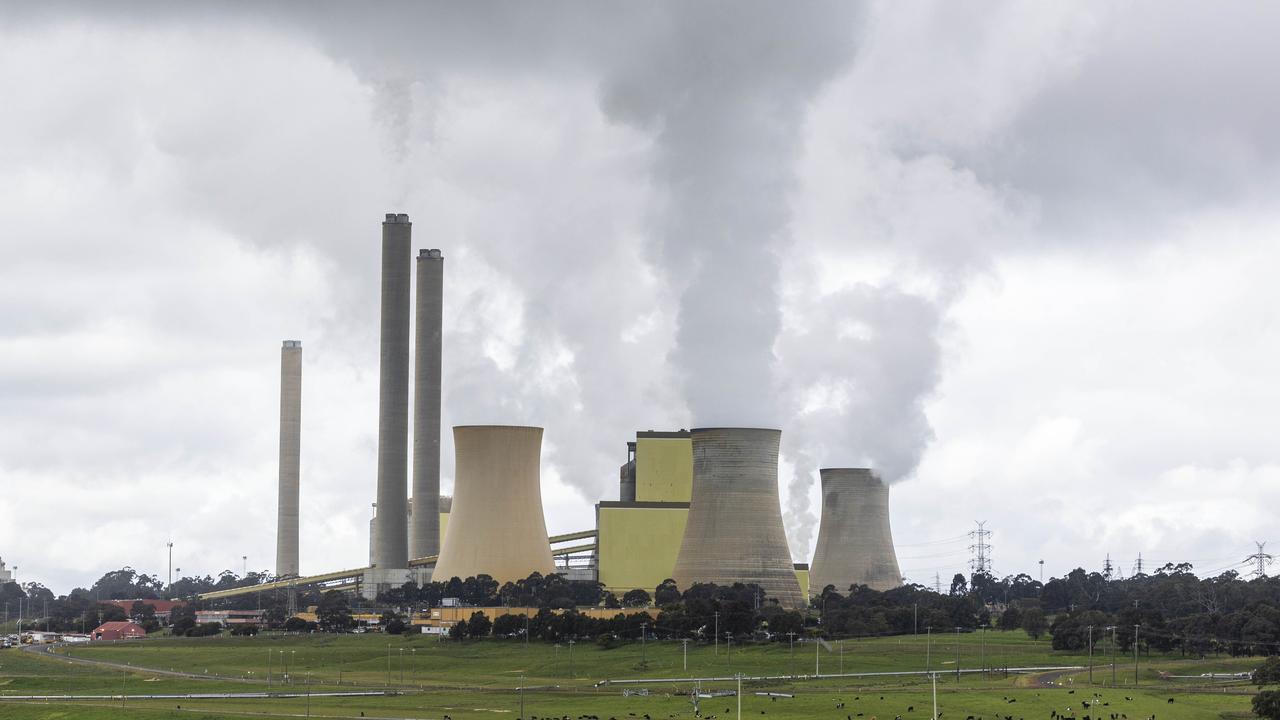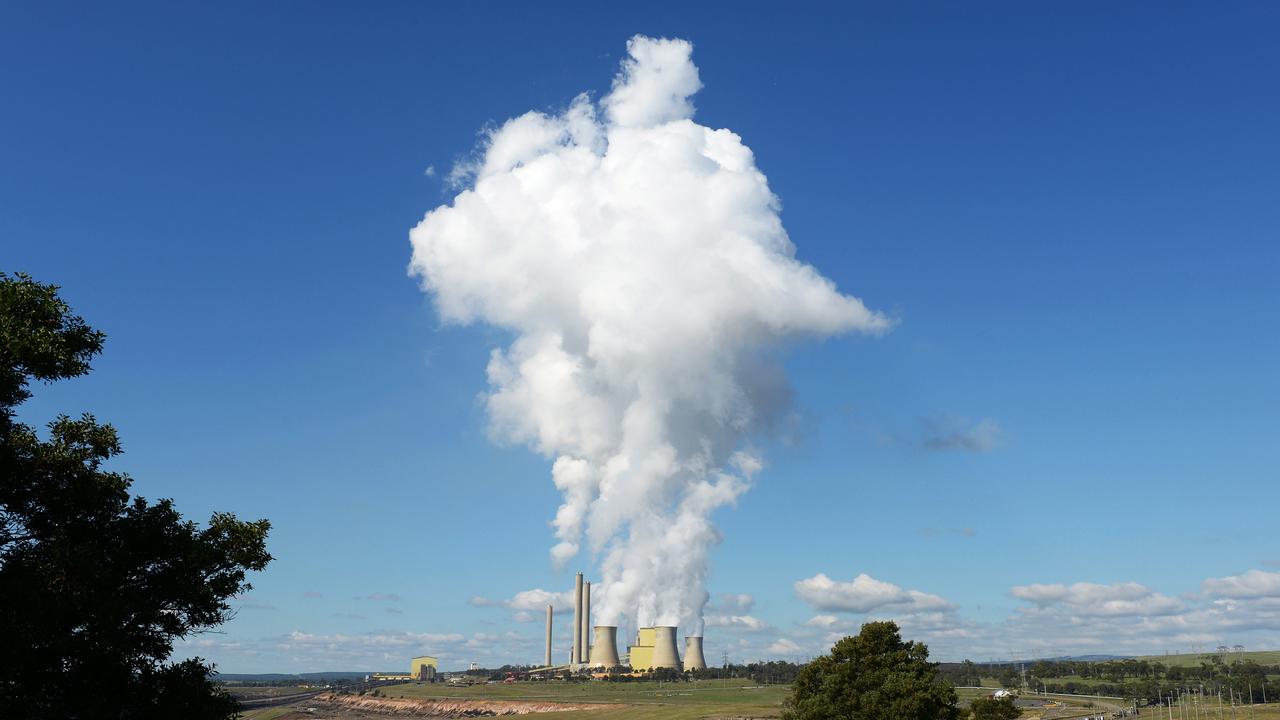AGL says it will cost $20bn to green its energy portfolio
The energy major says it will shutter Victoria’s Loy Yang A coal-fired generator a decade early, with the company flagging the need to find $20bn to green its generation portfolio.
AGL Energy interim chief Damien Nicks has conceded the company’s ambitious plan to exit coal and turn green its portfolio could fall hostage to a massive logjam looming for Australia’s renewable energy sector – despite giving in to investor demands to decarbonise.
AGL on Thursday said it would need to find up to $20bn to accelerate its exit from coal generation, after announcing plans to bring forward the closure date of its Loy Lang A power station in Victoria.
The energy major’s planned spending adds to a growing boom in renewable investment spending across the country which is now likely worth considerably more than $100bn over the next decade.
The company’s planned $20bn outlay comes on top of Anthony Albanese’s $20bn election commitment to upgrade transmission infrastructure, a $62bn clean energy plan outlined by the Queensland government, a $32bn energy infrastructure road map in NSW, and $20bn in spending in Victoria.

AGL will be competing with major mining companies such as BHP, Rio Tinto and Fortescue Metals Group for labour and energy infrastructure, while big resources companies are also planning to spend billions of dollars over the next decade to decarbonise their operations.
Mr Nicks told The Australian that AGL was confident its track record of developing renewable energy assets would allow it to meet its ambitious target, as would with its ability to use existing energy hubs close to transmission.
But he conceded AGL’s renewable energy expansion would need to be matched with work elsewhere in the national energy market, to be successful.
“The risk on the transmission, the risk of the build out, is about getting an alignment between all of the parties in the Australian energy market to deliver this – because it is a big build out,” he said.
“What I would say is that our growth is on two fronts – one the renewable side, and we will be using both our partners such as Tilt, and other players in the market to deliver that renewable piece.
“And we will use our customer base to offtake that energy as it gets developed.”
Mr Nicks said AGL’s position as one of the country’s biggest power retailers puts it in the box seat to develop and commission new renewable energy projects, given it already has a ready-made customer base for any generation projects it commits to develop.
But AGL’s climate transition action plan, also released on Thursday, also warned the massive boom in renewable investment announced across the country posed a risk to its own plans.
“To ensure the continued delivery of reliable and affordable energy, the decarbonisation of AGL’s generation portfolio requires the delivery of significant amounts of supporting infrastructure to support a low-emissions electricity system,” the report said.
“This will require an unprecedented level of co-ordination between all levels of government, regulated networks, private businesses, and the broader community, as well as a favourable external operating environment for energy businesses and global advances in the cost of low-emissions technologies.”

The power generator and retailer released the long awaited reset to its strategy on Thursday, saying it plans to exit coal by the middle of 2035, and has set an interim target of owning 5 gigawatt of renewable and firming assets by the end of the decade.
Its plan includes the closure of Loy Lang A by 2035, a decade ahead of schedule, and the construction of a massive portfolio of renewable energy and battery assets capable of replacing the company’s coal-fired fleet.
But the company says it will need to find up to $20bn in capital spending to realise its decarbonisation plans over the next 12 years, as the company looks to at 12GW of renewable energy assets by the time it finally exits coal in 2035.
The 12GW renewable energy plants would include 6.5GW of primary generation, such as wind and solar farms, plus 5.5GW of firming capacity – including batteries and pumped hydro.
To achieve that target AGL says it would need to build 12 new wind farms the size of its 453 megawatt Coopers Gap operation, and another eight new solar plants the size of its 102MW Nyngan solar farm.
In addition it would need 14 new 250MW grid-scale battery stations, supported by at least eight other long-duration energy storage plants – such as pumped hydro operations, hydrogen plans or bio-fuelled firming projects.
AGL currently has 3.2GW of firming capacity in its development pipeline and under construction, including a 250 megawatt battery at Torrens Island in South Australia, due for completion in mid-2023. It has also planned a 50MW battery in Broken Hill and the 500 megawatt Liddell battery, the 200 megawatt Loy Yang battery and the 250 megawatt Muswellbrook Pumped Hydro project.
AGL already plans the closure of its remaining coal-fired units at Liddell in the NSW Hunter Valley by April 2023 and will mothball the nearby Bayswater power station by the end of 2033.
But, despite expectations from AEMO – listed in its 2022 integrated system plan – that all of Victoria’s brown coal plants could be out of the system by 2032, market regulators warned this week any further acceleration of the exit of coal fired generation could place strain on the east coast grid’s stability and drive up costs.
RBC Capital Markets analyst Gordon Ramsay said on Thursday that AGL’s plan to close Loy Yang A, and its Bayswater plant in the NSW Hunter Valley – due to close in 2033 – could be derailed if work elsewhere was delayed.
“If there has not been enough investment in grid firming and grid stability services to maintain grid security prior to the proposed closure date of Bayswater and Loy Yang A, then the heightened risk to grid security may lead to intervention by the market operator to continue the operation of the coal-fired plants beyond their proposed closure date,” he said.
“Even if AGL meets its 12GW of new generation by 2036 target, the reliability of the grid will be determined by the investment of external parties in the national electricity market.”

AGL flagged financial year guidance of earnings before interest, tax, depreciation and amortisation of $1.25bn to $1.45bn on Thursday, with a likely underlying profit of $200m to $320m.
Climate Change Minister Chris Bowen said the government would ensure “no one is held back and no one is left behind” through the energy transition. “We need to ensure that these closures are properly managed and that we invest in the firmed dispatchable renewable energy,” Mr Bowen said.
Additional reporting: David Mills
Originally published as AGL says it will cost $20bn to green its energy portfolio





